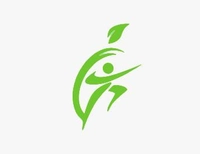Vestibular migraine is a type of migraine that affects the vestibular system, which controls balance and can lead to dizziness, vertigo, and imbalance. Though more common in adults, it can also occur in children, presenting unique challenges for diagnosis and management.
Symptoms and Diagnosis of Vestibular Migraine
Children with vestibular migraines may experience:
- Vertigo and Dizziness: Episodes can last from minutes to hours and may or may not be accompanied by headaches.
- Nausea and Vomiting: Due to the dizziness, children often feel nauseous, leading to vomiting in severe cases.
- Sensitivity to Light and Sound: Like traditional migraines, vestibular migraines can cause sensitivity to stimuli.
Diagnosing vestibular migraines in children can be challenging due to the overlap of symptoms with other conditions. Healthcare providers often rely on detailed patient history, symptom tracking, and ruling out other potential causes.
Causes and Triggers
Vestibular migraines in children can be triggered by various factors, including:
- Stress: Emotional stress is a common trigger for migraines.
- Sleep Disruption: Inadequate or irregular sleep patterns can increase the likelihood of a vestibular migraine episode.
- Dietary Factors: Certain foods like chocolate, caffeine, and aged cheeses are known to trigger migraines in some children.
- Hormonal Changes: For older children, hormonal changes during puberty can also be a trigger.
Management and Treatment
- Lifestyle Modifications: Regular sleep patterns, a balanced diet, and stress management techniques can help reduce the frequency of attacks.
- Medications: For some children, preventive medications or those used to treat acute attacks may be prescribed. This can include anti-migraine medications or drugs to manage symptoms like nausea.
- Physical Therapy: Vestibular rehabilitation therapy (VRT) can help children manage dizziness and balance issues. This involves specific exercises to improve the brain's ability to adapt to balance changes.
- Support and Education: Parents and caregivers should be educated about the condition, its triggers, and management strategies to provide the best support for their child.
Supporting Young Patients
Living with vestibular migraines can be challenging, especially for children. Support from family, teachers, and healthcare providers is essential. Schools should be informed about the child’s condition, and accommodations, such as allowing rest breaks or providing a quiet space during an attack, should be considered.
Conclusion
Vestibular migraines in children, though less common, require careful attention and management. By understanding the symptoms, triggers, and treatment options, parents and caregivers can help their children lead a healthy, balanced life. Early intervention and support can significantly improve the quality of life for young patients affected by this condition.

